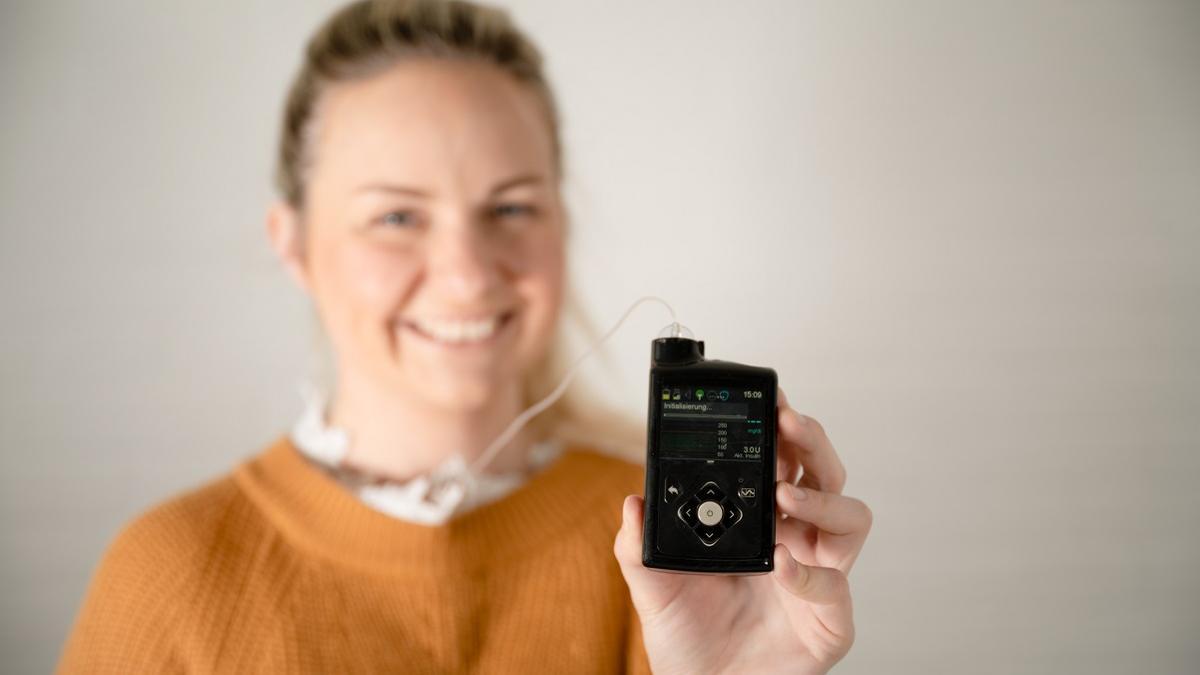One of the most prevalent diseases today is diabetes, which, as explained by the Dr. Marcela Ramírezspecialist in the Endocrinology and Nutrition Service of Olympia Quirónsalud;
-
“Is due to an absolute or relative deficit in insulin secretion“, the hormone produced by the pancreas that lowers the level of glucose in the blood, or due to resistance to its action,”
We talk about a asymptomatic disease for which there are treatments to control it, which ensures the quality of life of patients.
The problem is that, In many cases, diabetic people have problems keeping their blood sugar levels balanced with what this means. of deterioration to their health.
Four types of diabetes
Dr. Ramírez explains that currently Diabetes mellitus is classified into four types.
1 – First of all, the type 1 diabetes, which occurs “due to autoimmune destruction of the pancreatic cells that produce insulin and, therefore, there is an absolute deficiency of this hormone.” This type of diabetes can appear at any age, but it most commonly appears between the ages of 5 and 7 and during puberty.
2 – Secondly, there is type 2 diabetes, the most common form of presentation of this disease. As the specialist explains It is caused by “a progressive loss of insulin secretion, often in the context of insulin resistance.””.
And although these two are the best known There are other specific, less common types of diabetes.
3 – They are those diabetes caused by:
-
Genetic defects in cells that secrete insulin or in the action of insulin
-
Diseases that affect the pancreas
-
Endocrinological diseases
-
Drugs or chemicals
-
Infections
-
Syndromes associated with diabetes.
4 – Finally, the doctor points out the fourth type, gestational diabetes, which is caused by an alteration in glucose levels during pregnancy.
Signs that diabetes is decompensated
In some cases the patient may suffer a decompensation of your sugar levels despite being diagnosed and treated.
This decompensation may have serious consequences both in the short term (hypoglycemia, hyperglycemia) and in the long term (diabetic retinopathy, development of diabetic foot, diabetic neuropathy…).
For all these reasons, knowing the signs of this decompensation is essential, and among these, Dr. Marcela Ramírez lists the most common:
-
Being very thirsty (polydipsia).
-
Excessive urine volume (polyuria).
-
Weightloss.
-
Nausea and vomiting.
-
Abdominal pain.
-
Dehydration.
-
General deterioration.
-
Accelerated breathing.
-
Decreased level of consciousness.
Keys so that diabetes does not decompensate
The best way to avoid diabetes decompensation is to prevent its onset. This is valid for type 2 diabetes which, unfortunately, type 1 is not preventable.
And the best way, as Dr. Ramírez indicates, is to maintain a healthy diet, engage in regular physical activity and avoid overweight and obesity.
If it is too late and the diagnosis of type 2 diabetes is a reality and We do not want glucose levels to be unbalanced, the specialist insists that “diabetology education, changes in lifestyle and pharmacological treatments are essential.”
These lifestyle changes consist, mainly, of “maintaining a healthy diet that allows weight loss in the event of overweight or obesity, avoiding rapidly absorbed carbohydrates.”
-
And according to the expert, “A study showed that a significant percentage of diabetic patients who lose around 15% of weight in the first years after diagnosis of the disease can achieve remission of diabetes mellitus.”.
Another fundamental element is carry out physical activity regularly, practicing a minimum of 150 minutes of aerobic exercise per weekof moderate intensity, as well as strength exercises with two or three weekly sessions.
On the other hand, correctly follow the pharmacological treatment to control sugar, either with non-insulin medications or with the insulin treatment provided by the patients with diabetes type 1, is essential to maintain good control of the disease.

